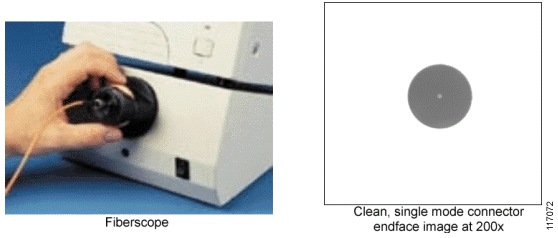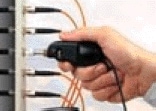What is Fiber Optic Splicing
Knowledge of fiber optic splicing methods is vital to any company or fiber optic technician involved in Telecommunications or LAN and networking projects.
Simply put, fiber optic splicing involves joining two fiber optic cables together. The other, more common, method of joining fibers is called termination or connectorization. Fiber splicing typically results in lower light loss and back reflection than termination making it the preferred method when the cable runs are too long for a single length of fiber or when joining two different types of cable together, such as a 48-fiber cable to four 12-fiber cables. Splicing is also used to restore fiber optic cables when a buried cable is accidentally severed.
There are two methods of fiber optic splicing, fusion splicing & mechanical splicing. If you are just beginning to splice fiber, you might want to look at your long-term goals in this field in order to chose which technique best fits your economic and performance objectives.
Mechanical Splicing vs. Fusion Splicing
• Mechanical Splicing:
Mechanical splices are simply alignment devices, designed to
hold the two fiber ends in a precisely aligned position thus enabling light to pass from one fiber into the other. (Typical loss: 0.3 dB)
• Fusion Splicing:
In fusion splicing a machine is used to precisely align the two fiber ends then the glass ends are “fused” or “welded” together using some type of heat or electric arc. This produces a continuous connection between the fibers enabling very low loss light transmission. (Typical loss: 0.1 dB)
• Which method is better?
The typical reason for choosing one method over the other is economics. Mechanical splicing has a low initial investment ($1,000 – $2,000) but costs more per splice ($12-$40 each). While the cost per splice for fusion splicing is lower ($0.50 – $1.50 each), the initial investment is much higher ($15,000 – $50,000 depending on the accuracy and features of the fusion splicing machine being purchased). The more precise you need the alignment (better alignment results in lower loss) the more you pay for the machine.
As for the performance of each splicing method, the decision is often based on what industry you are working in. Fusion splicing produces lower loss and less back reflection than mechanical splicing because the resulting fusion splice points are almost seamless. Fusion splices are used primarily with single mode fiber where as Mechanical splices work with both single and multi mode fiber.
Many Telecommunications and CATV companies invest in fusion splicing for their long haul singlemode networks, but will still use mechanical splicing for shorter, local cable runs. Since analog video signals require minimal reflection for optimal performance, fusion splicing is preferred for this application as well. The LAN industry has the choice of either method, as signal loss and reflection are minor concerns for most LAN applications.
Fusion Splicing Method
As mentioned previously, fusion splicing is a junction of two or more optical fibers that have been permanently affixed by welding them together by an electronic arc.
Four basic steps to completing a proper fusion splice:
Step 1: Preparing the fiber – Strip the protective coatings, jackets, tubes, strength members, etc. leaving only the bare fiber showing. The main concern here is cleanliness.
Step 2: Cleave the fiber – Using a good fiber cleaver here is essential to a successful fusion splice. The cleaved end must be mirror-smooth and perpendicular to the fiber axis to obtain a proper splice. NOTE: The cleaver does not cut the fiber! It merely nicks the fiber and then pulls or flexes it to cause a clean break. The goal is to produce a cleaved end that is as perfectly perpendicular as possible. That is why a good cleaver for fusion splicing can often cost $1,000 to $3,000. These cleavers can consistently produce a cleave angle of 0.5 degree or less.
Step 3: Fuse the fiber – There are two steps within this step, alignment and heating. Alignment can be manual or automatic depending on what equipment you have. The higher priced equipment you use, the more accurate the alignment becomes. Once properly aligned the fusion splicer unit then uses an electrical arc to melt the fibers, permanently welding the two fiber ends together.
Step 4: Protect the fiber – Protecting the fiber from bending and tensile forces will ensure the splice not break during normal handling. A typical fusion splice has a tensile strength between 0.5 and 1.5 lbs and will not break during normal handling but it still requires protection from excessive bending and pulling forces. Using heat shrink tubing, silicone gel and/or mechanical crimp protectors will keep the splice protected from outside elements and breakage.
Mechanical Splicing Method
Mechanical splicing is an optical junction where the fibers are precisely aligned and held in place by a self-contained assembly, not a permanent bond. This method aligns the two fiber ends to a common centerline, aligning their cores so the light can pass from one fiber to another.
Four steps to performing a mechanical splice:
Step 1: Preparing the fiber – Strip the protective coatings, jackets, tubes, strength members, etc. leaving only the bare fiber showing. The main concern here is cleanliness.
Step 2: Cleave the fiber – The process is identical to the cleaving for fusion splicing but the cleave precision is not as critical.
Step 3: Mechanically join the fibers – There is no heat used in this method. Simply position the fiber ends together inside the mechanical splice unit. The index matching gel inside the mechanical splice apparatus will help couple the light from one fiber end to the other. Older apparatus will have an epoxy rather than the index matching gel holding the cores together.
Step 4: Protect the fiber – the completed mechanical splice provides its own protection for the splice.
Tips for Better Splices:
1. Thoroughly and frequently clean your splicing tools. When working with fiber, keep in mind that particles not visible to the naked eye could cause tremendous problems when working with fiber optics. “Excessive” cleaning of your fiber and tools will save you time and money down the road.
2. Properly maintain and operate your cleaver. The cleaver is your most valuable tool in fiber splicing. Within mechanical splicing you need the proper angle to insure proper end faces or too much light escaping into the air gaps between the two fibers will occur. The index matching gel will eliminate most of the light escape but cannot overcome a low quality cleave. You should expect to spend around $200 to $1,000 for a good quality cleaver suitable for mechanical splicing.
For Fusion splicing, you need an even more precise cleaver to achieve the exceptional low loss (0.05 dB and less). If you have a poor cleave the fiber ends might not melt together properly causing light loss and high reflection problems. Expect to pay $1,000 to $4,000 for a good cleaver to handle the precision required for fusion splicing. Maintaining your cleaver by following manufacturer instructions for cleaning as well as using the tool properly will provide you with a long lasting piece of equipment and ensuring the job is done right the first time.
3. Fusion parameters must be adjusted minimally and methodically (fusion splicing only). If you start changing the fusion parameters on the splicer as soon as there is a hint of a problem you might lose your desired setting. Dirty equipment should be your first check and them continue with the parameters. Fusion time and fusion current are the two key factors for splicing. Different variables of these two factors can produce the same splice results. High time and low current result in the same outcome as high current and low time. Make sure to change one variable at a time and keep checking until you have found the right fusion parameters for your fiber type.
FiberOpticTools.net stocks a variety of fiber optic tools and fiber optic tool kit for your fiber optic splicing applications, BUY NOW and get FREE SHIPPING on most items!
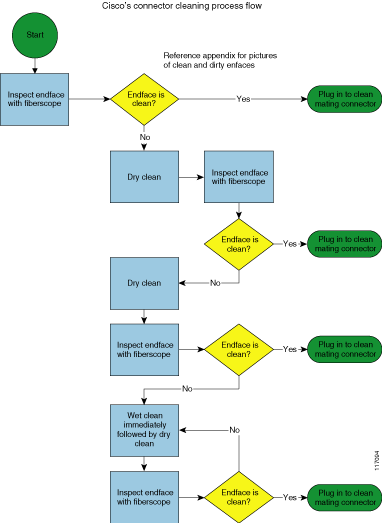
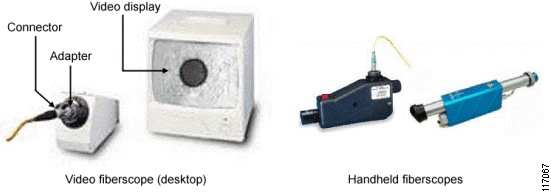
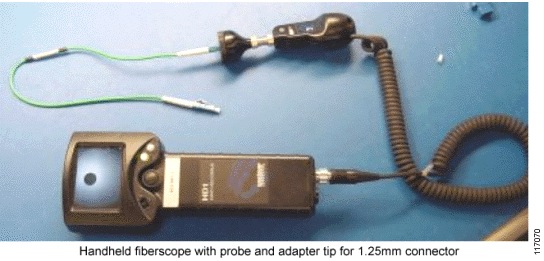
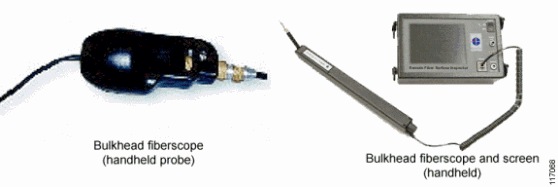
 Caution: Read the reminders and warnings before you begin this process.
Caution: Read the reminders and warnings before you begin this process. Warning: Invisible laser radiation might be emitted from disconnected fibers or connectors. Do not stare into beams or view directly with optical instruments.
Warning: Invisible laser radiation might be emitted from disconnected fibers or connectors. Do not stare into beams or view directly with optical instruments.